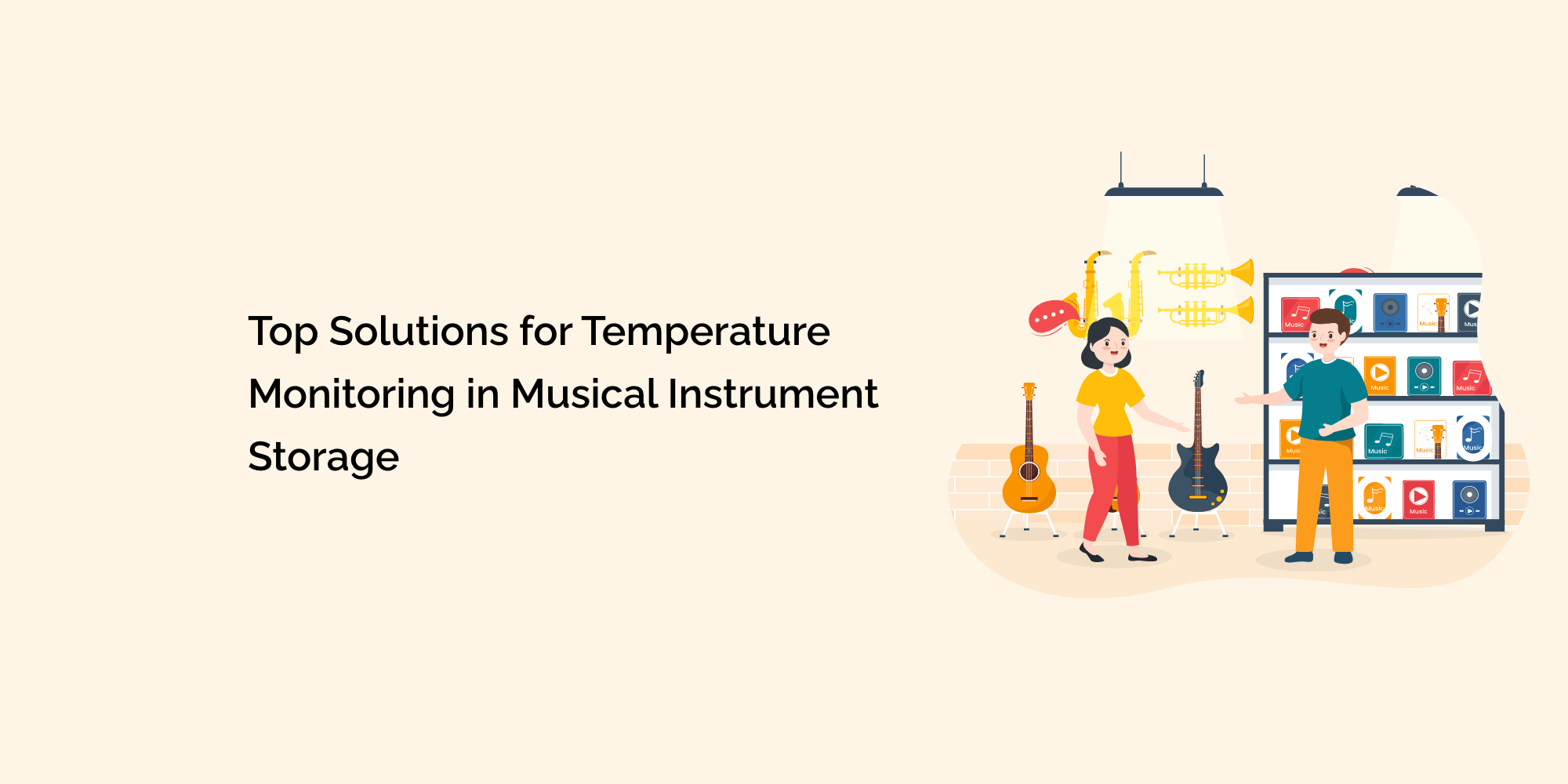Proper temperature monitoring is essential for preserving the condition and longevity of musical instruments. Temperature fluctuations can cause significant damage, affecting instruments' structure, playability, and tone. This comprehensive blog post will explore the top solutions for temperature monitoring in musical instrument storage. From traditional methods to modern technological advancements, we will discuss various options that musicians and instrument enthusiasts can utilize to maintain a stable and optimal environment for their instruments.
Traditional Temperature Monitoring Methods:
- Analog Thermometers: Analog thermometers provide a simple and cost-effective solution for temperature monitoring. These traditional instruments consist of a glass tube filled with mercury or alcohol that expands or contracts based on temperature changes. While they are relatively accurate, they may require regular calibration and are best suited for smaller storage spaces.
- Liquid-Filled Temperature Gauges: Similar to analog thermometers, liquid-filled temperature gauges use a liquid medium that expands or contracts with temperature variations. These gauges often feature a clear, sealed glass or plastic casing filled with a colored liquid. The fluid level corresponds to the current temperature, allowing for easy temperature reading.
- Hygrometers with Temperature Display: Hygrometers are devices used to measure humidity levels, but many models also include temperature displays. These combined units provide a convenient solution for monitoring temperature and humidity in instrument storage areas. They can be analog or digital, giving accurate readings for temperature monitoring.
Digital Temperature Monitoring Solutions:
- Digital Thermometers: Digital thermometers offer precise and instant temperature readings. They come in various forms, including handheld devices and wall-mounted units. Digital thermometers display the current temperature digitally, allowing easy tasks and monitoring.
- Wireless Temperature Sensors: Wireless temperature sensors provide flexibility and convenience in temperature monitoring. These compact devices can be placed in different areas of the instrument storage space and wirelessly transmit temperature data to a central monitoring unit. This allows for real-time temperature monitoring and remote access to temperature readings.
- Data Loggers: Data loggers are electronic devices that record and store temperature data over time. They are handy for tracking temperature trends, identifying temperature fluctuations, and detecting patterns affecting instrument storage. Data loggers can be set to measure temperature at specific intervals, providing valuable information for long-term monitoring and analysis.
Smart Monitoring Systems:
- Internet of Things (IoT) Technology: IoT-based intelligent monitoring systems are revolutionizing temperature monitoring in various industries, including instrument storage. These systems utilize wireless sensors, cloud connectivity, and data analytics to provide real-time monitoring, alerts, and remote access to temperature data. Intelligent monitoring systems offer advanced features, such as customizable temperature thresholds and automated notifications.
- Mobile Apps and Cloud Integration: Mobile apps with cloud integration allow musicians and instrument enthusiasts to monitor temperature conditions directly from their smartphones or tablets. These apps provide temperature readings, historical data, and customizable alerts. Cloud integration ensures secure storage and access to temperature data from anywhere, at any time.
Temperature Control Systems:
- HVAC Systems: Heating, ventilation, and air conditioning (HVAC) systems significantly maintain stable temperature conditions in large instrument storage spaces. HVAC systems provide precise temperature control and can have zoning capabilities to create separate temperature zones for different instrument types or storage areas.
- Climate Control Cabinets: Climate control cabinets are designed explicitly for instrument storage and provide a controlled environment with stable temperature conditions. These cabinets often have built-in temperature sensors and electronic controllers to maintain the desired temperature range. Climate control cabinets are an ideal solution for valuable or delicate instruments.
Best Practices for Temperature Monitoring:
- Placement of Temperature Sensors: Place temperature sensors strategically in different areas of the instrument storage space to ensure accurate and representative readings. Consider areas near walls, windows, or heat or cold sources, as they may have different temperature conditions.
- Regular Calibration and Maintenance: Calibrate and monitor temperature devices regularly to ensure accurate readings. Follow manufacturer guidelines and best practices to keep the machines in optimal working condition.
- Temperature Alerts and Notifications: Set up temperature alerts and notifications to be informed of any temperature fluctuations outside the desired range. This allows for prompt action and preventive measures to protect instruments from potential damage.
- Professional Assistance: If you have valuable or delicate tools, consider seeking professional assistance from instrument technicians, luthiers, or storage facility experts. They can provide tailored advice on temperature monitoring, storage conditions, and maintenance for your specific instruments.
Certainly! Here are some frequently asked questions (FAQs) about temperature monitoring in musical instrument storage:
How often should I check the temperature in my instrument storage area?
It is recommended to check the temperature in your instrument storage area regularly, especially if the space is prone to temperature fluctuations. Daily or weekly checks are generally sufficient to ensure stable storage conditions.
Are there any temperature control systems available for instrument storage?
Yes, temperature control systems are available for instrument storage, such as heating, ventilation, and air conditioning (HVAC) systems designed for precise temperature control. Additionally, climate control cabinets are specifically designed to maintain stable temperature conditions for instrument storage.
Conclusion:
Temperature monitoring is a vital aspect of instrument care and preservation. By implementing the right solutions for temperature monitoring in instrument storage, musicians and enthusiasts can ensure a stable and optimal environment for their instruments. Whether through traditional methods, digital solutions, or intelligent monitoring systems, accurate temperature monitoring allows for proactive measures, early detection of issues, and the preservation of instrument quality and longevity. Remember to follow best practices, regularly maintain monitoring devices, and seek professional guidance when needed. With proper temperature monitoring, you can create an environment that safeguards your musical instruments and ensures their performance quality for years.








